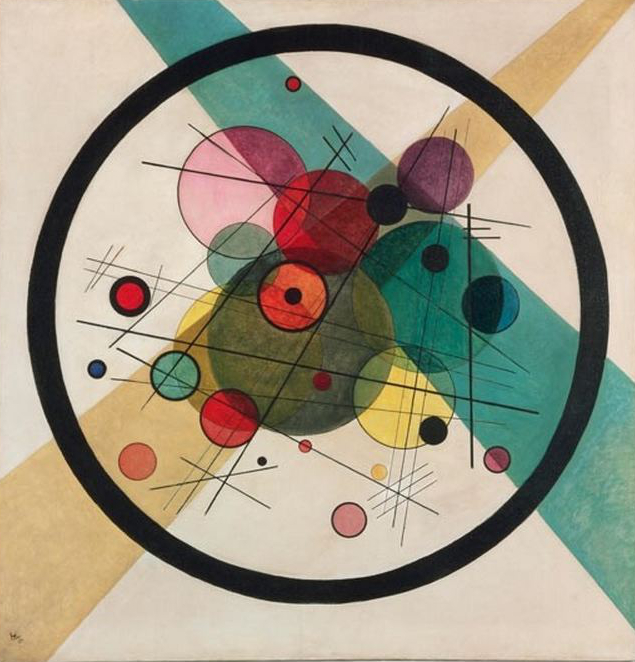We take our shape for granted. As we do the contours of our eyes and the curves of our heart. But for everything to be sculpted the way Nature has found it best for us to be, cells need to know when to multiply and when to stop multiplying, in addition to knowing how to remain close to one another while dealing with external forces such as the gravitational pull. It all comes down to a very delicate balance between biology and physics. Even a single cell needs to be able to counter surrounding tensions without which it would simply collapse and hence lose its three-dimensional status. Within every cell many different proteins are busy making sure that the cell's tension is sufficient for it not to collapse, whilst others promote cell proliferation and cell binding as an organ is gradually formed. Yes-associated protein - YAP - is one such protein that not only has a role in cell proliferation and tissue regeneration but also in organ shape and alignment.
Shape and size are just two of Nature's many mysteries. How does a heart know when to stop growing? Even more enigmatic perhaps, how does it know which shape to adopt? And who tells it where to stay? The shape and size of an organ depends on the physical forces that act upon it and its response to them, but also, of course, on its genetic makeup. The first to have described in detail the phenomenon of morphogenesis was the Scottish pioneer of mathematical biology, D'Arcy Thompson (1860-1948) - author of "On Growth and Form" in which he postulates that animal body shapes are conditioned by gravity. His work has been admired by biologists and physical anthropologists alike, but also by architects and artists such as Henry Moore, Salvador Dali and Jackson Pollock - although in his hypothesis he failed to understand the importance of evolution.
A protein discovered in the early 1990s and known as YAP - for Yes-associated protein - has proved to have a major role not only in cell proliferation, apoptosis inhibition and organ shape but also in organ alignment. To start with, it is the prime mediator of the Hippo signalling pathway, the pathway that controls organ size and shape in animals by regulating cell proliferation, cell differentiation and cell death. Many components of the Hippo pathway are highly conserved throughout the animal kingdom, which goes to show how essential it is. Within this pathway, upstream regulators either promote the expression of YAP or, in contrario, its degradation, thus in turn controlling downstream cell proliferation.

YAP is expressed in almost every tissue and is a transcriptional co-activator; lacking a DNA-binding site however, it needs the help of other transcriptional factors (TFs) or co-activators - all of which belong to the TEAD family of TFs - to activate gene expression. YAP itself becomes active upon phosphorylation governed by cell-to-cell contacts. It then binds to its co-activator via what has been coined a WW domain - barely 35 amino acids long and one of the smallest known modular protein domains known to date, which is believed to mediate protein-protein interactions and act as a binding pocket for P-rich or P-containing ligands. Gene expression is altered once YAP has been activated. This leads to cell proliferation, inhibition of cell apoptosis but also stem cell amplification - hinting at a role in tissue regeneration. Besides being an integral part of the Hippo pathway, YAP is also thought to link several other pathways all of which play key roles in cell fate and tissue regeneration.
How exactly though does YAP affect an organ's shape? When YAP is dysregulated in zebrafish, tissues not only collapse but do not align correctly. When tissues flatten, this means that their internal tension is not strong enough to counter the forces outside them, such as gravity. And what creates tissue tension? Actomyosin contraction. Actomyosin is an important component of both a cell's cytoskeleton and its extracellular matrix, and as such is not only important for the 3D shape of a cell, and by extension an organ, but also essential in cell migration and organ alignment. This would then imply that YAP has a role in forming the actomyosin network. What is more, YAP seems to be influenced by cellular stiffness, cell adhesion or even cell geometry, meaning that it can function as a mechanosensor. And since YAP is also able to regulate tissue tension downstream, there may well be a feedback loop where tissue tension controls YAP, and YAP in turn guides tissue tension.
YAP's transcriptional activity seems to be involved in several different instances all leading to organ formation and alignment. So it doesn't come as a surprise that it is regulated in several different ways too - amongst which G protein-coupled receptor signalling, protein-protein interactions, phosphorylation, and mechanical stress. And if YAP has a role in cell proliferation and regeneration, then there's a fair chance that it is a potent oncogene. Indeed, when YAP is dysregulated, the Hippo pathway goes haywire too. The over-expression of YAP is at the heart of various human cancers. Its role in cancer has been extensively explored over the years - cells are disinhibited, and seem to grow with no specific point of anchorage for instance, two indicators of oncogenic transformation.
Consequently, YAP and its co-activators - such as the YAP-TEAD complex - have become targets for anti-cancer therapeutics. Diverse compounds could doubtlessly dock to one of the binding sites to break or weaken the complex and thus stifle further cell differentiation. Though still little is known, in the past years research has been focusing on the Hippo signalling pathway, and new discoveries are being made at a very fast rate. Besides cancer, understanding the role of YAP in cell regeneration and organ formation could help to harness embryonic stem cells to generate complex organs that require not only different kinds of tissue but also their correct alignment.

